SSZT071 june 2022 AMC3330 , TPSI2140-Q1 , TPSI3050 , TPSI3050-Q1 , TPSI3052 , TPSI3052-Q1 , UCC14130-Q1 , UCC14131-Q1 , UCC14140-Q1 , UCC14141-Q1 , UCC14240-Q1 , UCC14241-Q1 , UCC14340-Q1 , UCC14341-Q1 , UCC15240-Q1 , UCC15241-Q1
High-voltage industrial and automotive systems such as factory automation equipment, grid infrastructure applications, motor drives and electric vehicles (EVs) can generate several hundred to thousands of volts, which poses a significant safety risk to humans and can reduce equipment lifetimes. This article explains how to keep these HV systems safe by utilizing the latest isolation technologies for improved reliability while reducing solution size and cost.
Methods of Isolation
Integrated circuits (ICs) achieve isolation by blocking DC and low-frequency AC currents while allowing power, analog signals or high-speed digital signals to transfer across the isolation barrier. Figure 1 shows three popular semiconductor technologies used to achieve isolation: optical (optocoupler), electric field signal transfer (capacitive) and magnetic field coupling (transformer).
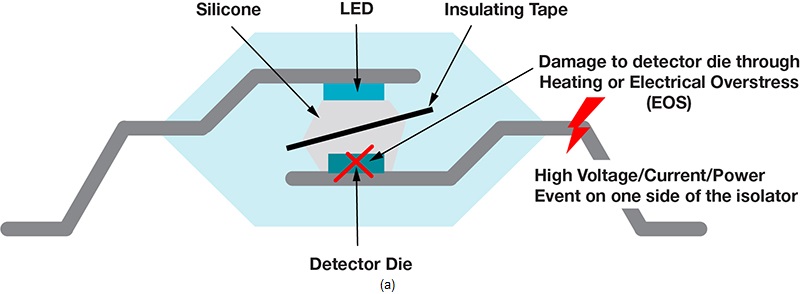
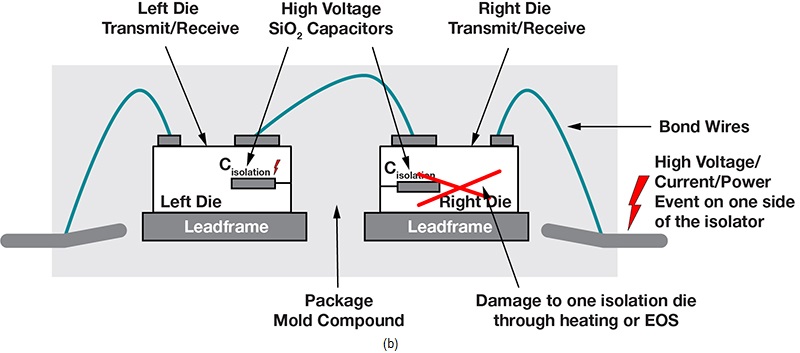
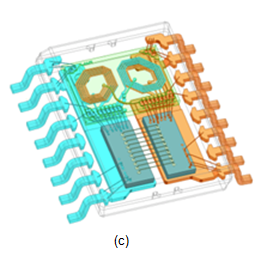 Figure 1 Semiconductor Isolation
Technologies: Optocoupler (a); Capacitive (b); Transformer (c).
Figure 1 Semiconductor Isolation
Technologies: Optocoupler (a); Capacitive (b); Transformer (c).TI leverages capacitive isolation technology and proprietary integrated planar transformers (magnetic isolation), along with advanced packaging and process technology, to achieve some of the highest levels of reliability, integration and performance available with our large and diverse isolated-ICs portfolio.
| Overcome high-voltage design challenges with reliable isolation technologies | |

|
Read our white paper to learn about common high-voltage galvanic isolation concerns and methods, and how to achieve high-voltage isolation reliably in industrial and automotive systems while reducing solution size and cost. |
Capacitive Isolation
Capacitive isolation technology is based on AC signal transfer across a dielectric. TI’s capacitive isolators are constructed using an SiO2 dielectric, which provides very high dielectric strength. Since SiO2 is an inorganic material, it’s also extremely stable over moisture and temperature. Further, our proprietary methodology for multilayered capacitor and multilayer passivation improves isolator quality and reliability by reducing the dependence of high-voltage performance on any single layer. Our capacitive technology supports working voltages (VIOWM) of 2 kVRMS, withstands isolation voltages (VISO) of 7.5 kVRMS and has a surge voltage capability of 12.8 kVPK.
Magnetic Isolation
Magnetic isolation is typically used in applications that require high-frequency DC/DC power conversion. One advantage of IC transformer-coupled isolation is the ability to transfer power in excess of hundreds of milliwatts, which often eliminates the need for a secondary-side bias supply. It’s also possible to use magnetic isolation to send high-frequency signals. In systems that need to send both power and data, you can use the same transformer winding coils for power and the signal needs, as shown in Figure 2. By combining both signals and power transfer over the same integrated transformer coil, both solution cost and size are minimized. The TPSI3050-Q1 and TPSI3052-Q1 utilize combined data and power transfer over the same transformer channel.
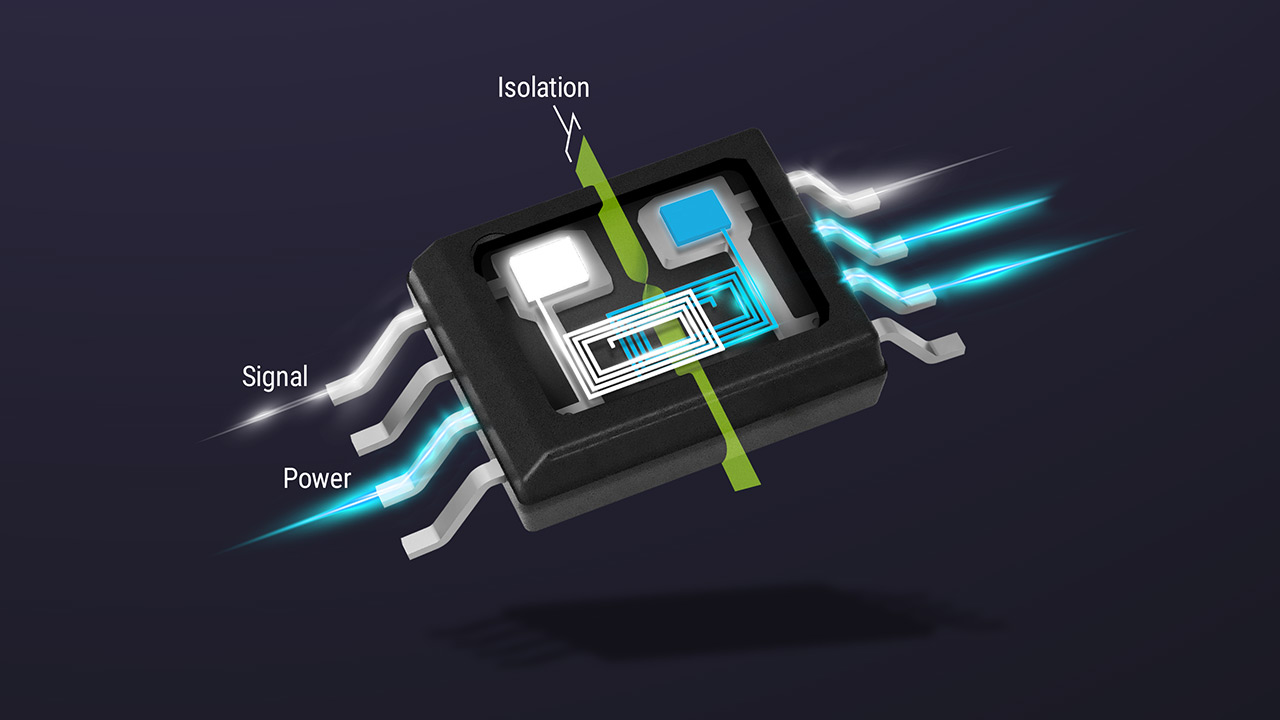 Figure 2 Using Magnetic Isolation to
Send Both Power and Signals Reliably across an Isolation Barrier
Figure 2 Using Magnetic Isolation to
Send Both Power and Signals Reliably across an Isolation BarrierTI uses a proprietary multichip module approach for magnetic isolation, which co-packages a high-performance planar transformer with an isolated power stage and dedicated controller die. We can build these transformers with either a high-performance ferrite core to improve coupling and transformer efficiency, or an air-core to save cost and complexity when the application requires only modest power transfer.
Achieve Isolation Needs Reliably While Reducing Solution Size and Cost.
Different applications require different isolation approaches. Let’s look at a few examples of how TI ICs can help solve high-voltage isolation needs in EV and grid infrastructure applications with very high reliability while also reducing solution size and cost.
EV Applications
Reduced weight, increased torque, higher efficiency and faster charging are boosting high-voltage battery stacks in EVs from 400 V to levels of 800 V – even as high as 1 kV. Battery management systems (BMSs) and traction inverters are two of the most critical EV subsystems where the 800-V domain needs to be isolated from the chassis to help ensure the safety of passengers and their vehicles.
The block diagram shown in Figure 3 is an example of a traction inverter that uses isolated gate drivers to drive high-voltage insulated-gate bipolar transistor (IGBT) or silicon carbide (SiC) modules in a three-phase, DC-to-AC inverter configuration. These modules can co-package as many as six IGBT or SiC switches, requiring up to six isolation transformers, powering six independent gate-driver ICs. Our UCC14240-Q1 is a dual-output, mid-voltage, isolated DC/DC power module that can enable higher performance in traction inverter, gate-driver bias applications while minimizing PCB area by reducing the number of external transformers.
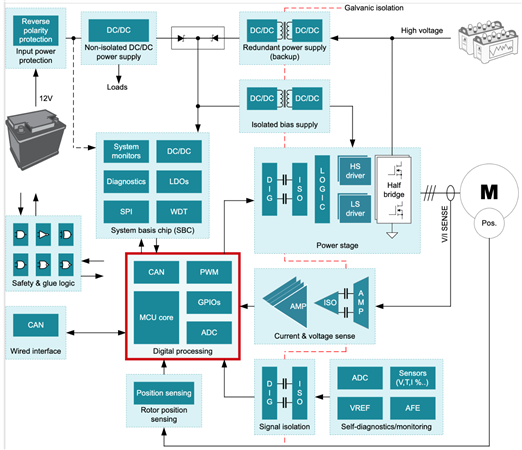 Figure 3 A Typical Traction Inverter System Block Diagram.
Figure 3 A Typical Traction Inverter System Block Diagram.Additionally, BMSs use a pre-charge circuit when connecting high-voltage battery terminals to subsystems. Our 5-kVRMS TPSI3050-Q1 isolated switch driver was designed to replace mechanical pre-charge contactors to achieve a smaller, more reliable solid-state solution. It provides reinforced isolation up to 5 kVRMS, and a 10 times higher operating lifetime than electromechanical relays, which degrade over time. Figure 4 illustrates the area savings that the TPSI3050-Q1 can provide as compared to a mechanical relay.
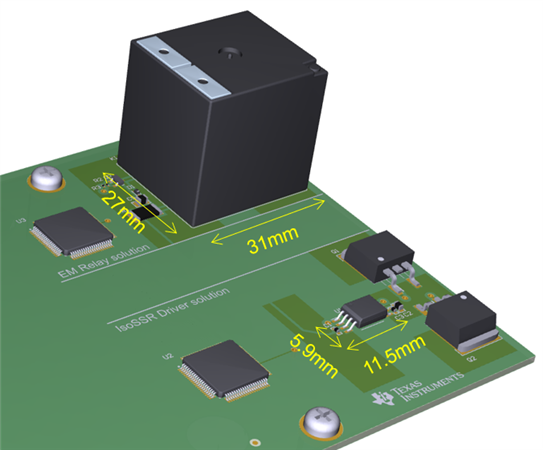 Figure 4 Reduction of Solution Size
Using Magnetic Isolation Based Solid-state Relay Driver (TPSI3050).
Figure 4 Reduction of Solution Size
Using Magnetic Isolation Based Solid-state Relay Driver (TPSI3050).Grid Infrastructure Applications
Isolation is essential in grid infrastructure applications to provide protection from high-voltage surges that may damage equipment or harm humans, eliminate disruptive ground loops in interconnections involving large ground potential differences (GPDs) and maintain data integrity during common-mode transient events.
Solar energy equipment and EV chargers can operate at voltages ranging from 200 V to 1,500 V or more. Figure 4 shows our AFE for Insulation Monitoring in High-Voltage EV Charging and Solar Energy Reference Design, reference design, which provides insulation resistance monitoring in grid infrastructure applications using our AMC3330 precision isolated amplifier and TPSI2140-Q1 isolated switch. Because there are no moving parts, this solid-state relay solution can perform frequent measurements for decades without any performance degradation. Both power and signals are transferable across the isolation barrier within the TPSI2140-Q1, so there’s no need for secondary-side bias supplies. And because the device is available in low-profile small outline IC (SOIC) packages, the solution size can be as much as 50% smaller than photorelay- or mechanical relay-based solutions.
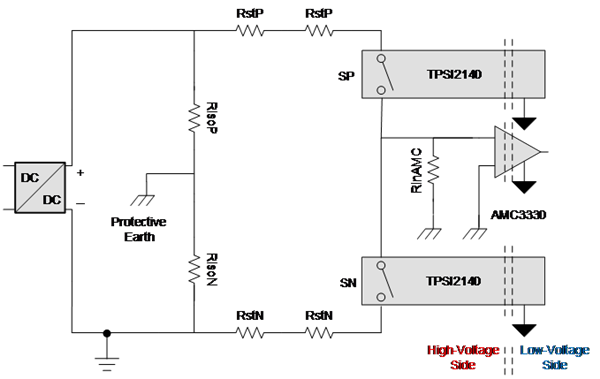 Figure 5 AFE for Insulation Monitoring
in High-voltage EV Charging and Solar Energy Block Diagram.
Figure 5 AFE for Insulation Monitoring
in High-voltage EV Charging and Solar Energy Block Diagram.Conclusion
By integrating more functionality within our isolation technology, TI is enabling engineers to maintain safety in applications like EVs and grid infrastructure while reducing design complexity, solution size and cost. See ti.com/isolationtechnology to see how we’re scaling our capacitive and magnetic isolation technologies to add more analog functions.
Additional Resources
- Read the white paper, “Enabling High Voltage Signal Isolation Quality and Reliability,” for more information about the reliability of TI’s high-voltage isolation capacitors.
- Check out the application brief, “How to Simplify Isolated 24-V PLC Digital Input Module Designs.”
- Learn about essential isolation parameters, certifications, and how to design and troubleshoot with various types of isolated ICs by watching the TI Precision Labs – Isolation training series.